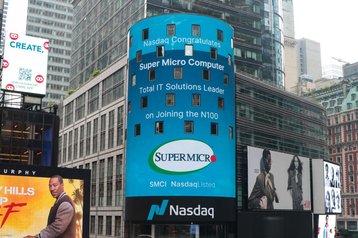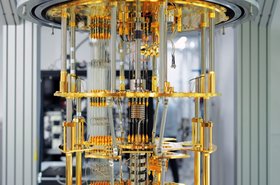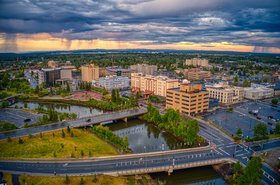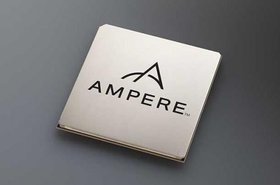Supermicro has said it expects net sales for Q2 2025 to be in the range of $5.6-5.7 billion, despite the company still failing to deliver its delayed annual report.
The quarterly net sales announced represent a 54 percent year-over-year (YoY) growth however, speaking on the company’s earning call, VP of corporate development Michael Staiger warned “actual results may differ materially from the results forecasted, and reported results should not be considered as an indication of future performance.”
President and CEO Charles Liang said Supermicro’s financial team and its new auditor, BDO, have been “fully engaged in completing the auditor process,” and he is “confident” the report will be filed with the SEC by the February 25 deadline.
Supermicro was forced to set up a special committee in July following concerns over its accounting practices, serious allegations from a short seller, and an ongoing investigation from the US Department of Justice.
While the committee reported in December 2024 that it found “no evidence of fraud or misconduct” on the part of management or the board, it did recommend Supermicro replace its CFO, a process which the company said it has started, with current CFO David Weigand retaining the role until a replacement is found.
Weigand participated in the company’s Q2 2025 earnings call and during his opening remarks, Liang said: “As previously stated, the special committee found no evidence to support the former auditor's reasons for resignation.
“However, over the past two quarters, we have added senior leaders in corporate communication, operations, finance, legal and compliance departments. We will continue to add more top experienced leaders to build a stronger corporate foundation for our rapidly growing and expanding global business, including the CFO, CCO, and other positions.”
Revenues of $40bn in FY26 a “conservative estimate”
Supermicro said it expects revenues to range between $23.5bn to $25bn for FY25, down on the company’s previous forecast of between $26-30bn. For FY26, the company expects to see $40bn in revenue – something Liang described on the call as a “relatively conservative estimation” – above analysts' expectations for the period of $30bn.
The company said its growth was driven by demand for air-cooled and DLC (direct liquid cooling) rack-scale AI GPU platforms, with AI-related platforms contributing to more than 70 percent of the company’s revenue in Q2 across both enterprise and cloud service provider markets.
Liang said he also believes Supermicro offers the majority of global liquid cooling and that the company expects more than 30 percent of new data centers worldwide to adopt liquid-cooled infrastructure within the next 12 months, driven by the rapid and continued growth of AI.
“Our growth trajectory for fiscal year '25 remains promising,” Liang said. “Highlighted by the beginning of our transition from Hopper to Blackwell GPUs, we expect the growth in new generation platform to accelerate as supply ramp [up] this quarter and beyond.”
He added: “We know we will continue to grow strongly in the future. Moving on to our technology progress, we are excited to announce that our Nvidia Blackwell products are shipping now. We have begun volume shipments of both air-cooled 10U and liquid-cooled 4U Nvidia B200 HGX systems. Meanwhile, our Nvidia GB200 NVL72 racks are fully ready as well.”
However, in response to questions from analysts Liang said that demand for Blackwell was continuing to outstrip supply, meaning that Supermicro was currently “waiting for more allocation” from Nvidia so it could start shipping GB200 NVL72s at a much higher volume.
He also implied that the delays in receiving Blackwell products led to the downgrading of Supermicro’s revenue range, stating: “We were all set to go, we were all set to ship with liquid cooling. We were ready. But the problem was that not everything else was. So, that was certainly a huge impact.”
Nevertheless, Liang said Supermicro’s product line continues to grow, noting that the company has an “industry-standard product line plus lots of chip sets,” including some “confidential products under development.” While no further information was given, he did say Supermicro already has a customer engaged with the company for those products
What's next for Datacenter Building Block Solutions?
On the production front, Liang told analysts that Supermicro’s US campuses now boast 20MW of power, enabling them to produce more than 1,500 DLC GPUs per month.
The company is also planning “substantial domestic manufacturing expansions in various regions across the US” to allow it to meet the increasing demand for products and services.
Elsewhere, he said the company’s new Malaysia campus will soon ship products to its regional partners while its Taiwan and European production facilities are also experiencing significant growth.
“In Silicon Valley, we are rapidly expanding our manufacturing sites to increase our DLC rack-scale production capacity,” Liang said.
In addition to flexing its DLC muscles, Supermicro also spoke about the company’s Supermicro 4.0 Datacenter Building Block Solutions (DCBBS), first announced in August 2024.
While remaining vague about some details of the solution – Liang said it’s “still a little bit confidential” – the CEO claimed that Supermicro would soon offer “more brand-new platforms for customers seeking further optimized, higher-density, and even greener AI solutions.”
This includes “expanding and enhancing” the company’s total liquid-cooled data center infrastructure solutions featuring the latest DLC technology, something that Liang said was exemplified by the xAI Colossus, the world's largest liquid-cooled AI supercomputer.
“Supermicro's DCBBS consolidates servers, racks, networks, storage, water towers, software management, and service for an end-to-end solution,” he said. “The true value of DCBBS is to save power, reduce space, and decrease water consumption, resulting in up to 40 percent lower TCO for our customers according to our calculation. It accelerates new datacenter deployments and helps modernize existing infrastructure in weeks or months, rather than quarters and years, significantly improving datacenter TTD and TTO.”
He said that the company was expanding DCBBS to include more key subsystems quarter after quarter, making it “a true one-stop-shop DC partner to the industry soon.”







